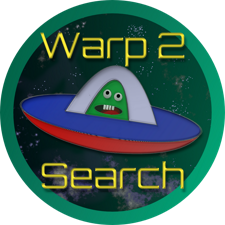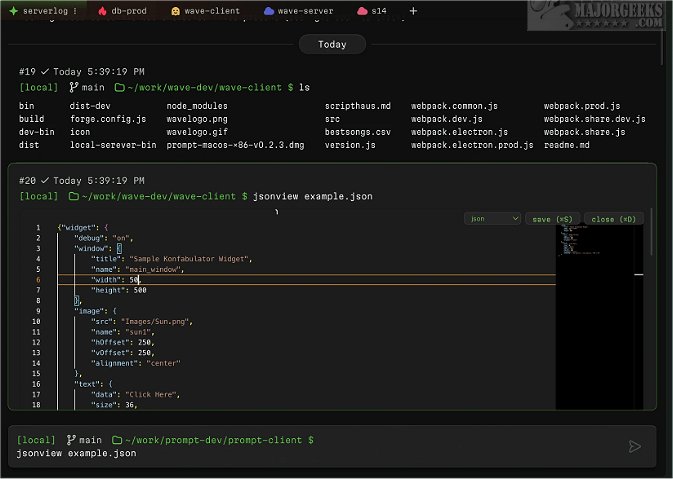Wave Terminal is an innovative, cross-platform Linux terminal designed to enhance productivity and streamline workflows. Unlike traditional command-line interfaces, Wave Terminal offers a user-friendly alternative that appeals to both seasoned command line users and newcomers to programming. As an open-source tool, it is free to use and customizable, allowing users to modify it to fit their specific needs.
One of Wave Terminal's standout features is its built-in inline renderers, which minimize context switching by allowing users to render code, images, markdown, and CSV files directly within the terminal. This capability enhances the user's experience by keeping all necessary information at hand without the need to switch between applications. Furthermore, Wave Terminal supports persistent sessions, enabling users to save their current state and effortlessly restore it after network disruptions or system reboots.
In addition to these features, Wave Terminal includes a searchable contextual command history that is available across all remote sessions and is saved locally. Users can efficiently organize their work using workspaces, tabs, and command blocks, facilitating project management that involves multiple environments, such as development, testing, and production servers.
File editing is simplified with Wave Terminal, allowing users to edit files inline, whether on their local machine or a remote server, with the ease of a standard text editor—no complex keyboard shortcuts required. The terminal ensures that all user data, including command history, environment data, output, and associated metadata, is securely stored locally in the ~/.waveterm directory, ensuring user privacy and data integrity.
To assist users in navigating its features, Wave Terminal includes a dedicated help section that serves as a comprehensive guide for getting started.
Extension: Future Developments and Community Engagement
As Wave Terminal continues to evolve, future updates may include enhanced collaboration tools, allowing multiple users to work on shared terminals in real time, which would be particularly beneficial for development teams. Additionally, integrating AI-driven command suggestions could help users discover new functionalities and optimize workflows.
Community engagement will also play a crucial role in the ongoing development of Wave Terminal. Users are encouraged to contribute to its codebase, report bugs, and suggest new features through its GitHub repository. This collaborative approach not only fosters innovation but also ensures that Wave Terminal evolves in alignment with the needs and preferences of its user base.
Moreover, as the software landscape continues to shift towards cloud computing and remote work, Wave Terminal's capabilities may expand to include seamless integration with popular cloud services, enhancing its utility for developers and tech professionals who rely on remote environments. With these potential advancements, Wave Terminal is poised to become an indispensable tool for a diverse range of users, regardless of their level of expertise
One of Wave Terminal's standout features is its built-in inline renderers, which minimize context switching by allowing users to render code, images, markdown, and CSV files directly within the terminal. This capability enhances the user's experience by keeping all necessary information at hand without the need to switch between applications. Furthermore, Wave Terminal supports persistent sessions, enabling users to save their current state and effortlessly restore it after network disruptions or system reboots.
In addition to these features, Wave Terminal includes a searchable contextual command history that is available across all remote sessions and is saved locally. Users can efficiently organize their work using workspaces, tabs, and command blocks, facilitating project management that involves multiple environments, such as development, testing, and production servers.
File editing is simplified with Wave Terminal, allowing users to edit files inline, whether on their local machine or a remote server, with the ease of a standard text editor—no complex keyboard shortcuts required. The terminal ensures that all user data, including command history, environment data, output, and associated metadata, is securely stored locally in the ~/.waveterm directory, ensuring user privacy and data integrity.
To assist users in navigating its features, Wave Terminal includes a dedicated help section that serves as a comprehensive guide for getting started.
Extension: Future Developments and Community Engagement
As Wave Terminal continues to evolve, future updates may include enhanced collaboration tools, allowing multiple users to work on shared terminals in real time, which would be particularly beneficial for development teams. Additionally, integrating AI-driven command suggestions could help users discover new functionalities and optimize workflows.
Community engagement will also play a crucial role in the ongoing development of Wave Terminal. Users are encouraged to contribute to its codebase, report bugs, and suggest new features through its GitHub repository. This collaborative approach not only fosters innovation but also ensures that Wave Terminal evolves in alignment with the needs and preferences of its user base.
Moreover, as the software landscape continues to shift towards cloud computing and remote work, Wave Terminal's capabilities may expand to include seamless integration with popular cloud services, enhancing its utility for developers and tech professionals who rely on remote environments. With these potential advancements, Wave Terminal is poised to become an indispensable tool for a diverse range of users, regardless of their level of expertise
Wave Terminal 0.11.6 Beta 4 / 0.11.5 released
Wave Terminal is a versatile, cross-platform Linux terminal that can be used for streamlining workflows.


